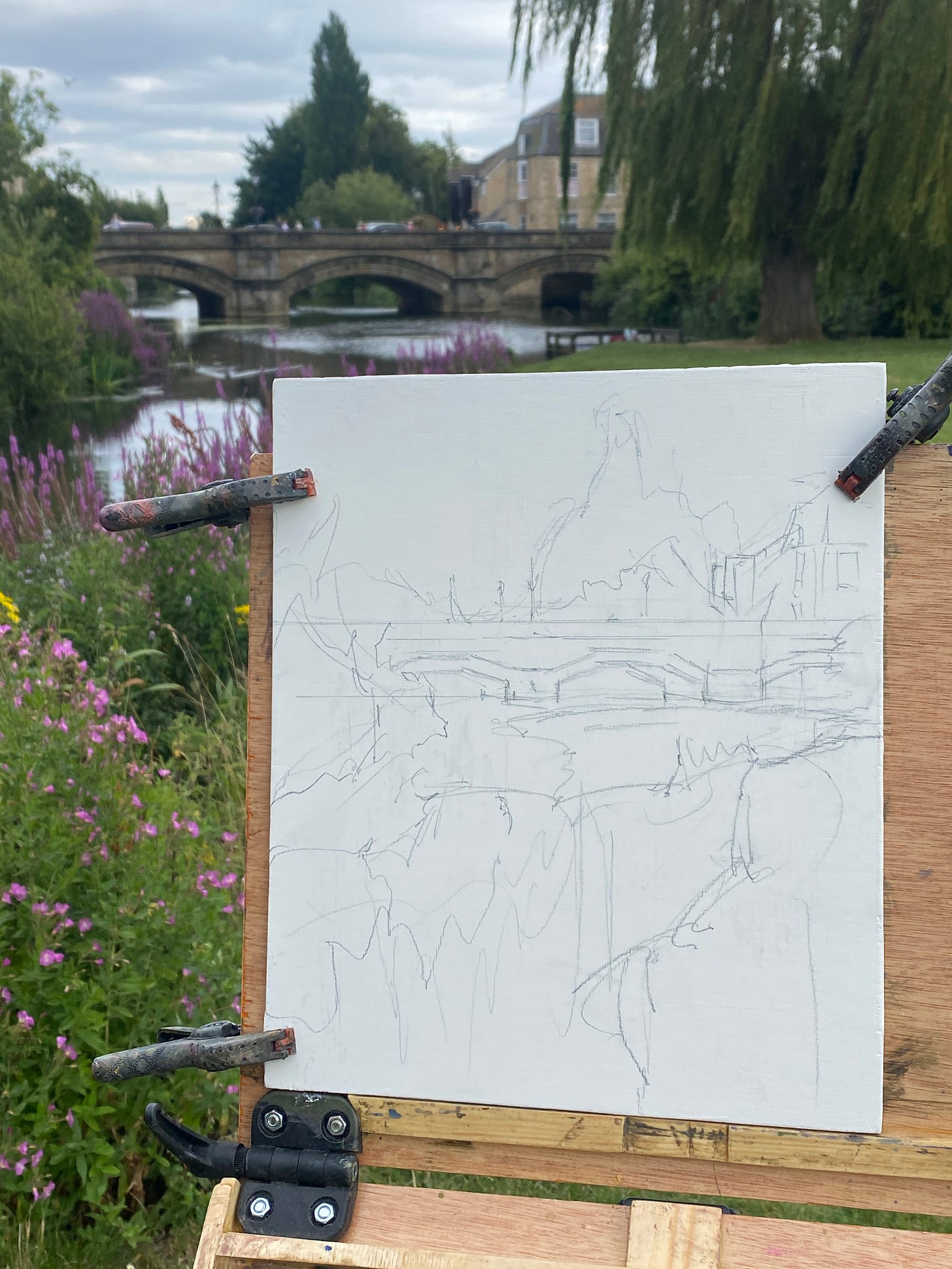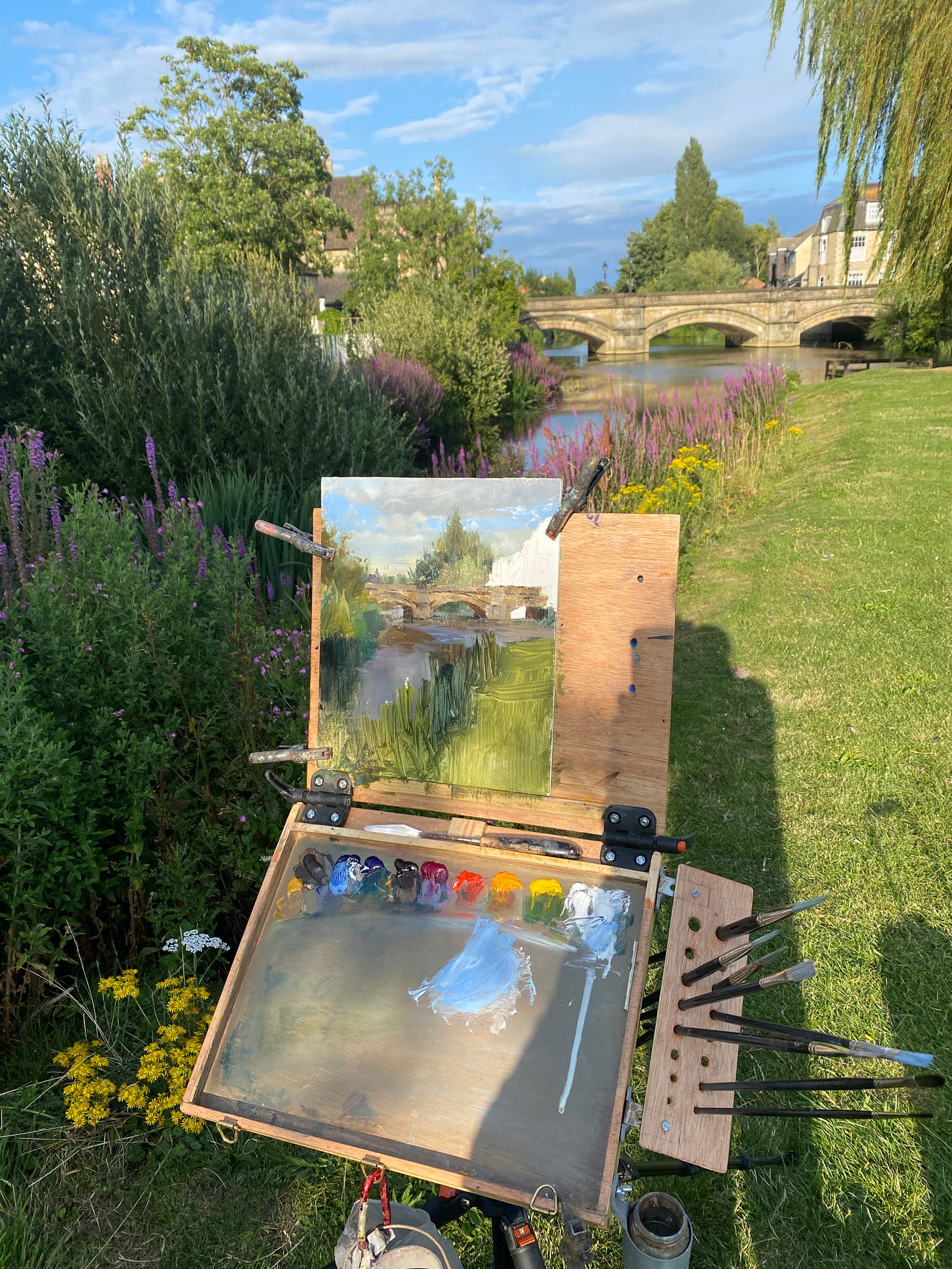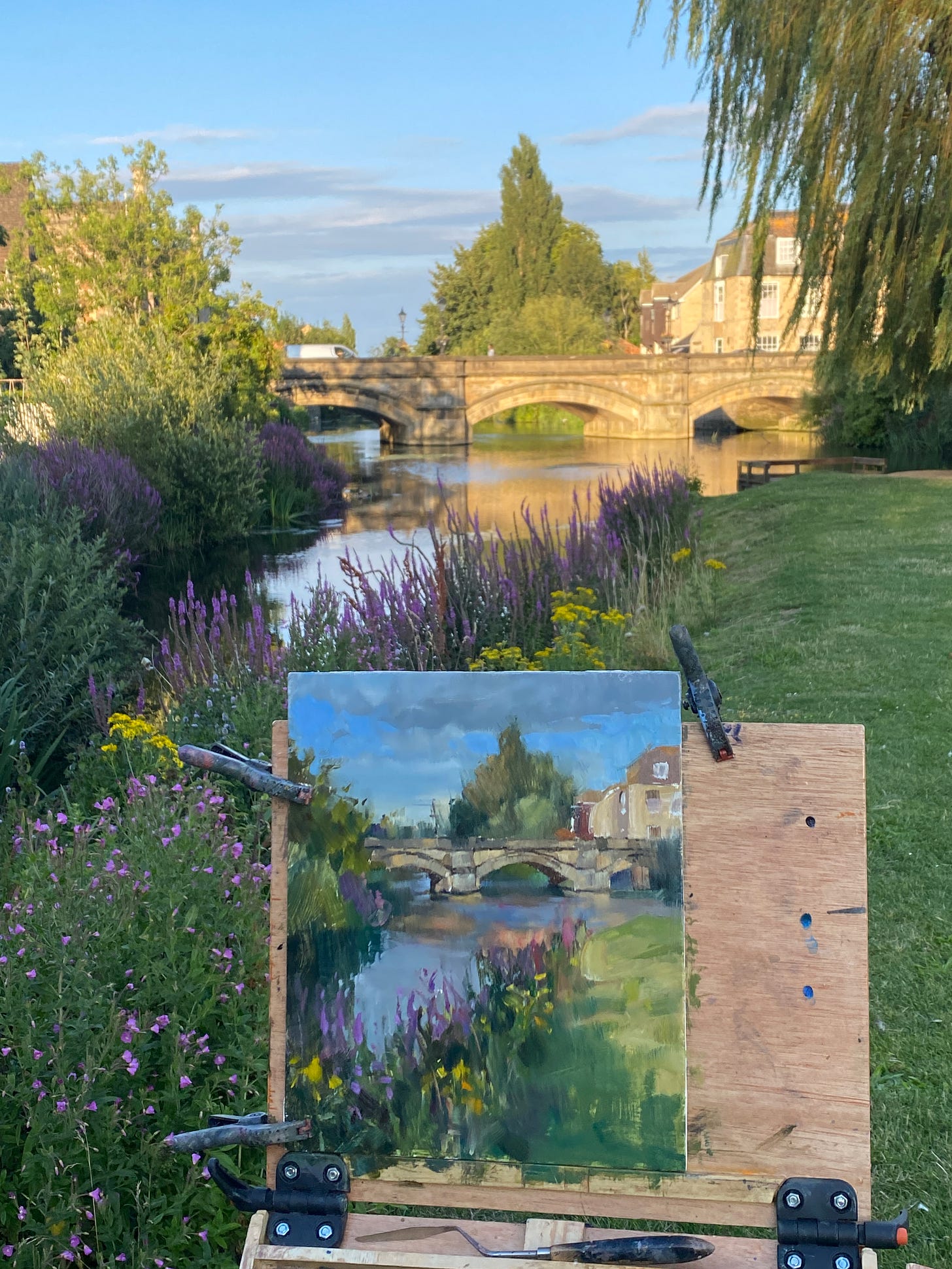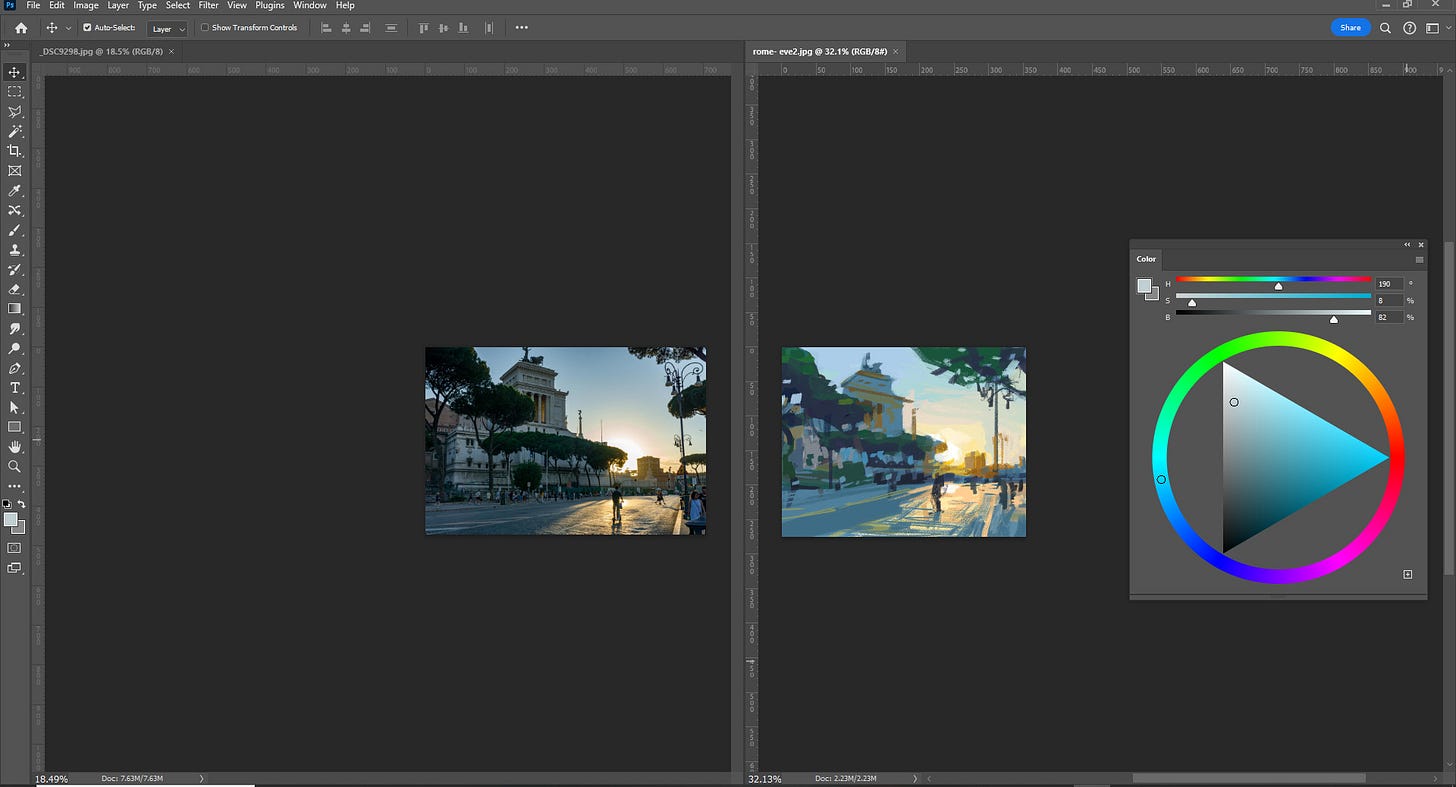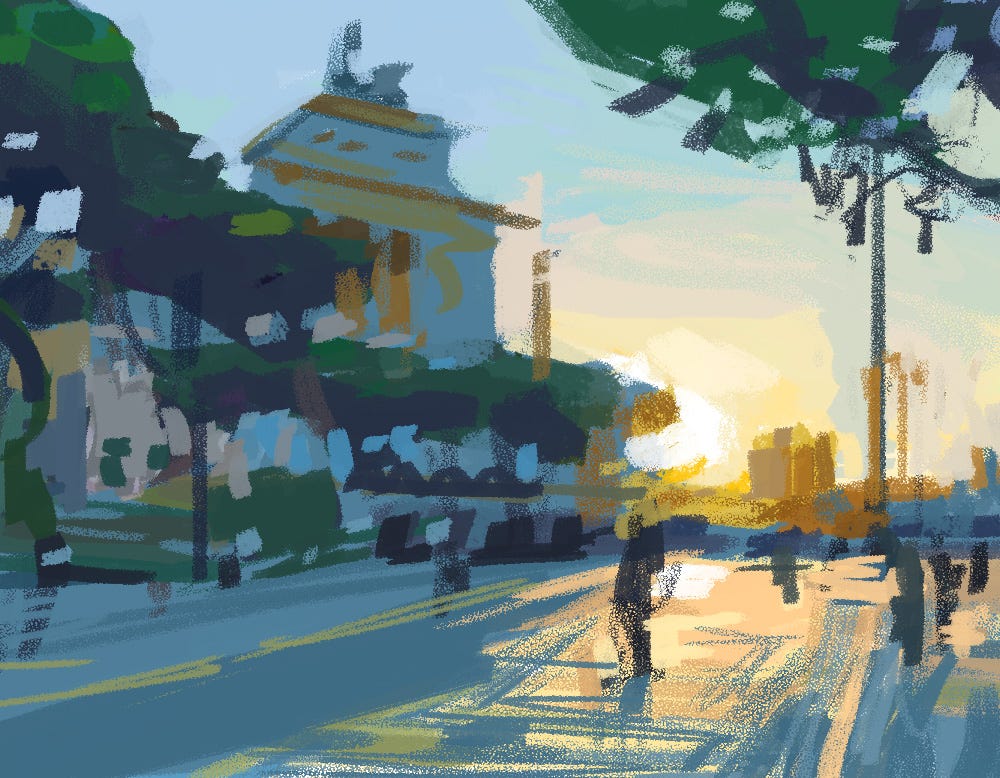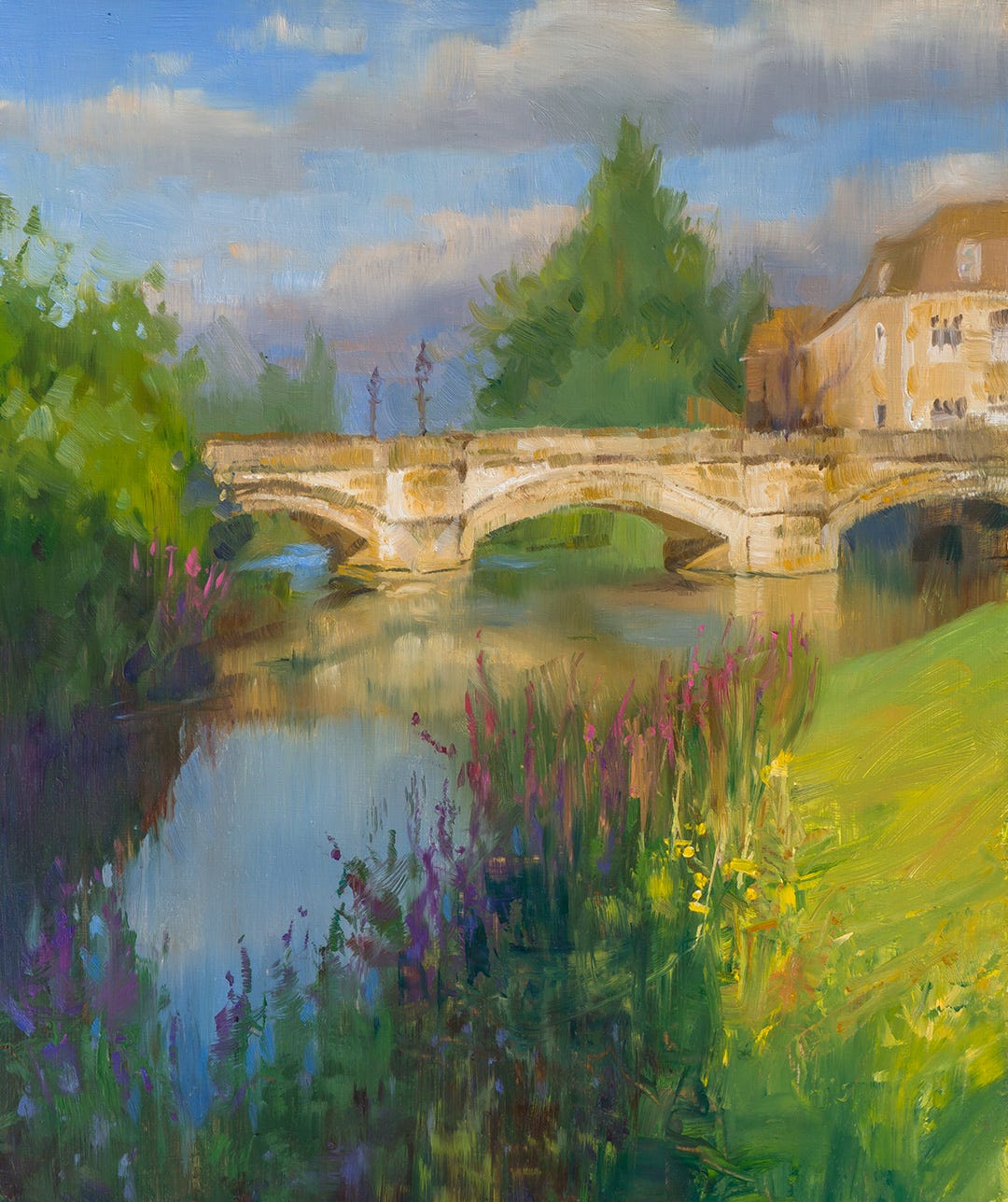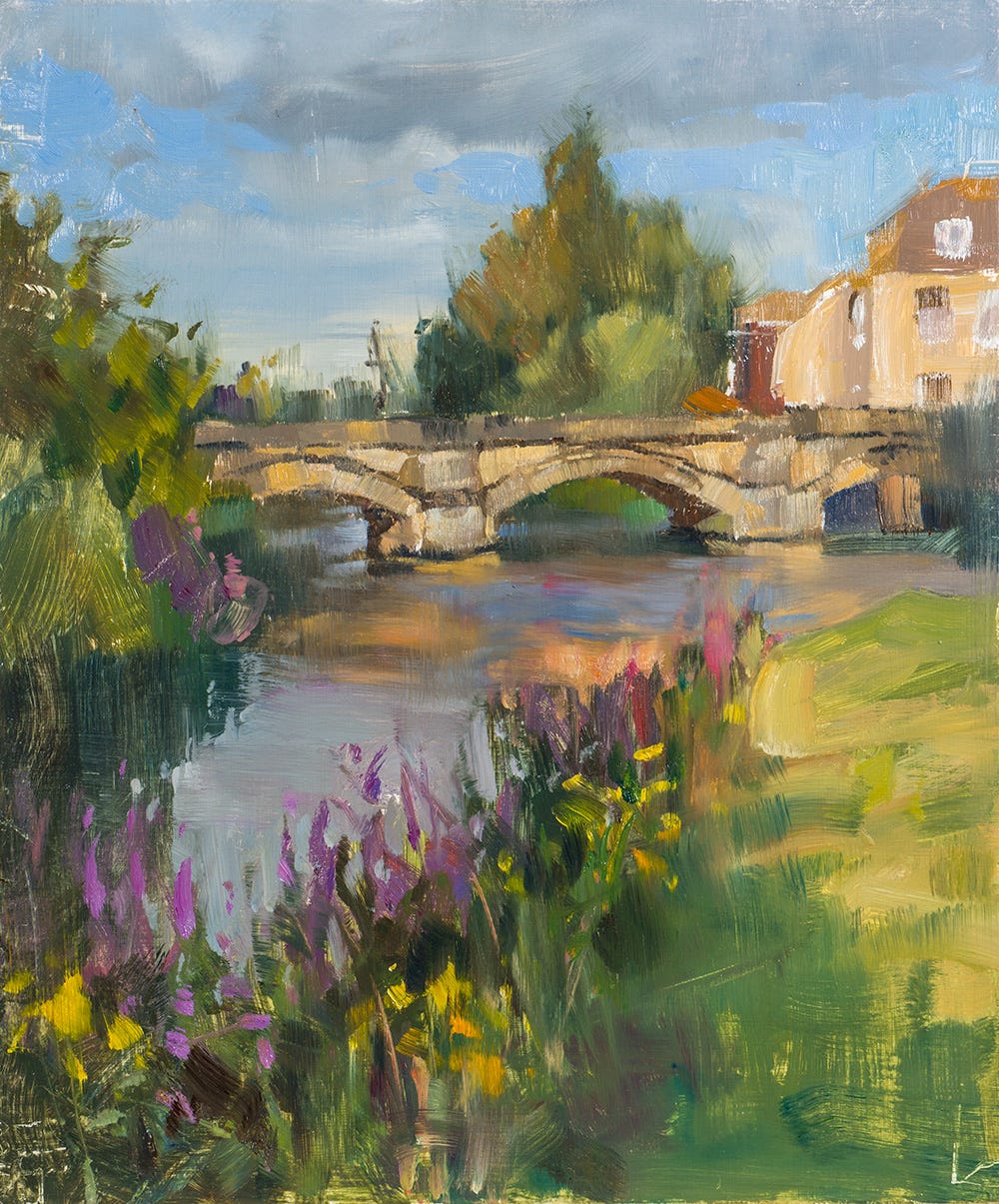On location vs studio work
Dear subscribers,
I recently delivered some paintings to a local gallery which now represents my work, (Peter Barker Fine Art) and took the opportunity to do some plein air work in the nearby picturesque village of Stamford. I’m also pleased to share that I’m now represented by another UK gallery, Duffield Art Gallery in Belper.
I've been considering approaching some galleries in the USA to see if they might be interested in representing my work. If any of my readers in the States have suggestions for galleries that could be a good match, I’d love to hear from you. As a thank you, I’ll offer a free one-year subscription to anyone who recommends a gallery that goes on to represent my paintings!
In other news, I’ll now be listing select paintings for auction!*
The first one goes live today and will run for 7 days only.
Bidding starts at £99 (about $140 US).
Edward VII statue, oil on panel, 12x8” Painted on location at Beacon Park, Lichfield, UK.
*If you don’t want to receive news about future auctions, just let me know.
Below is a view of where I set up in a meadow by the River Welland, with the town bridge in the background. I started around 5pm when it was fairly cloudy, beginning with an initial sketch to work out the composition.
Later on, I got into a conversation with a lovely couple, as often happens when painting in public. The lady, who described herself as a ‘lapsed’ painter, eventually asked, “Why don’t you paint in the sunshine? The painting would look much nicer!” I must admit, I was a bit speechless at that and could only reply that I wouldn’t be in Stamford for that long! In hindsight, I could have come up with any number of ‘smart-alec’ responses, but her question highlights a common perception about plein air painting. The idea that a plein air painter could actually choose or control the conditions under which they paint, or that certain lighting conditions or subjects are ‘better’ from an aesthetic standpoint, isn’t really a discussion one can have in polite conversation.
Below, you can see more progress pictures.
As is often the case with plein air work, the conditions changed quite dramatically about two hours into the painting. I had the unusual combination of both sunshine and rain at the same time. Thankfully, the rain was brief, but the sun persisted, and I found myself anxiously watching the sky, hoping it would retreat around 7pm. I’m starting to suspect the lady from earlier might have been a witch!
At this point, I couldn’t continue with the painting as the scene before me had completely transformed—something every painter who works from direct observation knows all too well. The colour relationships were entirely different. So, I faced a dilemma: Should I pack up and finish the painting from a photo reference (which, in my experience, rarely ends well)? Or should I try to recall how it looked before the sun appeared—essentially a form of mental torture, as I'd second-guess every colour decision? Alternatively, I could start over, either on a new panel or by overpainting the existing work.
I decided on the last option since I wasn’t particularly attached to the work so far and was actually enjoying how the sun was lighting up the bridge and casting interesting shadows across the meadow behind me.
Below is the completed (or perhaps abandoned) painting after another hour, around 8pm. As you can see, it doesn’t quite capture the sense of evening sunlight I was aiming for. While there’s some suggestion of sunlight with the differentiation of light and shadow values, the colour temperature relationships are a bit muddled. Still, there are some nice passages, and I felt inspired to try something different—creating a studio version of the same subject with a clearer sense of evening sunlight.
I also felt that the composition could be improved, so I did the sketch below to explore a more pleasing arrangement of shapes.
I then did some digital sketches in Photoshop, a technique I started experimenting with after my recent trip to Rome. I’ve found that working at ‘thumbnail’ size is particularly effective for this kind of work. If you're interested in using digital painting as a tool for refining composition ideas before starting on a canvas, I highly recommend David Dibble’s “Composing a Painting Through Small Studies.”
Below are some examples to illustrate what I mean. The photo reference is on the left, just to clarify! The digital sketches are very rough and aren't meant to be scrutinised up close—it's best to view them at thumbnail size. This approach is precisely what I aim for when doing a block-in from life: getting the big shapes and value/colour relationships on target. I've also included a larger version of the digital sketch below the others for a closer look.
For the digital sketch of Stamford, I used both the on-site painting and photo reference to explore a composition and colour harmony that I felt better captured the evening light.
Below is the studio painting as it currently stands, with the on-site version shown beneath it. I still prefer the brushwork in the plein air version; it has more variety and energy. However, I believe the colour harmony in the studio version is closer to what I observed in real life.
This comparison raises some interesting questions about the pros and cons of purely en plein air work versus studio work (whether based on photo reference or more considered studies after working on location). Personally, I often have much higher expectations for on-location work than I can usually achieve, mainly due to the many unpredictable factors involved. These approaches probably shouldn't be seen as mutually exclusive, as they require different skill sets, though there is definitely a lot of overlap between them.
Thanks for your attention, and I hope you found this interesting!
Just a quick reminder about the upcoming live class on Sunday 25th August, starting at 4pm UK time (8am PDT and 11am EDT) for paying subscribers. You can join at any time, and I will be recording the class in case you can’t make it. The Zoom link and login details are visible below if you are paying subscriber. I haven’t chosen a subject yet, but I’m considering exploring the process of creating a painting, starting from a photo reference, moving through a digital sketch, and then progressing to the actual painting.
If you plan to join and have a specific request for a subject, whether from life or otherwise, please let me know in the comments.
If you’re not a paying subscriber and would like to access the recording or join future classes, it’s only $7 a month.
Best regards,
Alex







